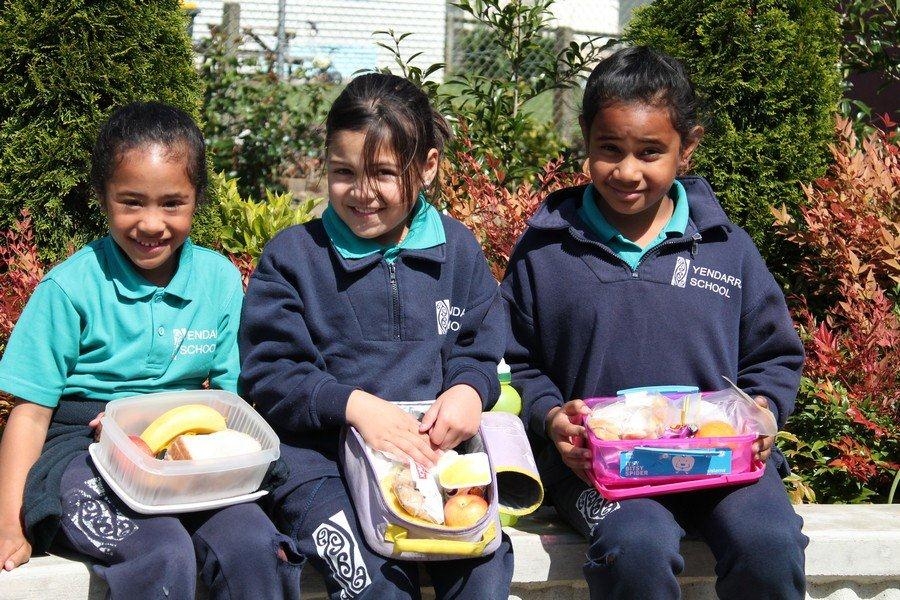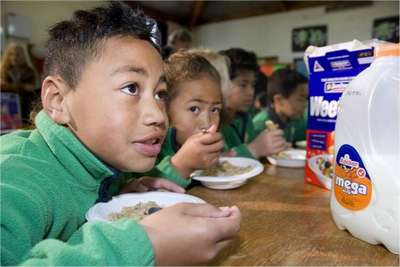Blog
The Yendarra School
Yendarra School is a Decile 1 primary school (Year 1 – 7) located in Otara – a low income community with predominantly Pacific and Maori families. Over 80 percent of the 271 children are Pacific.
In 2006 the school began a series of small changes in the food and beverage environment which have resulted in significant weight loss among pupils – and a lot of other striking improvements in behaviour, attendance, health and learning achievements. This occurred “overnight”.
Since then a powerful ripple effect has seen teachers, families and the wider community also making positive changes to their food and lifestyle habits – and also losing weight.
Led by Principal Susan Dunlop, the broader culture and the values of Yendarra School have provided the right environment for these changes to work. The school’s vision is to “be the best we can” and from a child’s first day, this motto is at the heart of everything they do. The school doesn’t have “rules”, but rather sets high expectations of its pupils. It has a wellbeing model with ten dimensions of wellbeing (including healthy eating) which are fully embedded into school programmes, a model which was highly praised in a recent ERO report.
Teachers were initially concerned that the children’s diets, particularly the high intake of sugar sweetened beverages (SSBs), were contributing to behavioural problems. The children were unsettled, unhappy, hyperactive, sometimes aggressive and violent. This was limiting their educational achievement, and creating a difficult environment for everyone.
The first step was to make the school “water only”. This was partly inspired by strong media focus on healthy nutrition at the time. The Principal anticipated a cautious approach, but with full support of the Board of Trustees, the change was introduced overnight. Water bottles were provided for each student, and new water fountains installed to provide an easy alternative to SSBs. There was only one complaint, and the impact was immediate. Behaviour problems disappeared and teachers and pupils were a lot happier.
Gradually, the school began to celebrate healthy food that was brought to school. Photos of children would be posted on the noticeboard with their healthy lunches. Peer pressure kicked in a very positive way, and soon it became “cool” to bring good food. The chips and coke started to disappear, and lunches brought from home became increasingly healthy – sandwiches, fruit and the occasional treat. Now, nearly all children bring healthy, homemade lunches every day.
The changes progressed opportunistically. Pies were banned on the back of new healthy school food guidelines introduced by the government at the time. Against expectations, resistance from parents was mild and short-lived. The Tuck Shop became the Kai Shop with a new operator. SSBs, pies, ice blocks and huge biscuits were replaced with ham and salad rolls and yoghurt. The Kai Shop now provides a useful – and at $2.50 – affordable backstop for parents who can’t make their children’s lunch.
The rituals around food were also changed, so that there is time for, and focus on, eating. At morning tea, following a karakia, everyone sits down for ten minutes to eat.
The school has enormous respect for parents, and there is a high level of engagement – 90 percent of parents come to parent interviews. At every opportunity, parents are supported with information about the economics of food choices, basic food preparation, and how to feed their children. It is an empowering approach, with emphasis on developing self-efficacy. While parental efforts are acknowledged with certificates, their primary motivation comes from seeing the children flourish and reach their potential, and as a bonus, their own weight loss. Now the parents are helping to drive the healthy food culture.
Indeed parents reported in a survey on the healthy food policy that they hadn’t found the changes hard, and saw the provision of healthy food as part of their role as good parents. They bring healthy food to school events such as family picnics and will proactively seek advice from the school if they’re unsure about any of the treats they want to include.
Changing the habits of teachers has also been important. The children are interested in what teachers eat, and when they saw teachers with takeaways, SSBs and two minute noodles, they complained that it was unfair. Now the teachers consciously model healthy food choices, and they’ve lost weight as well. They’re also enjoying a more positive teaching environment, so the school easily attracts and retains high quality teachers.
Sometimes on a Friday afternoon, as a reward, selected boys take part in “Master Chef” classes where they cook with the principal. The boys may not have much food in the cupboard at home over the week end, and they’re allowed to take the food home.
There have been some external nutrition programmes in the school. Fonterra’s “milk for schools” provides free milk in small cartons, which must be drunk at school. The school also has “Fruit in Schools” – an initiative funded by the Ministry of Health to provide fruit for low decile schools. A wide variety of fruit is available when the pupils arrive, and one piece a day is now compulsory. Initially the pupils were not keen and the school had to work hard to encourage them to try anything other than bananas. Part of the strategy was to tell pupils that it wasn’t free, that “someone has paid for this for your well-being”. It worked. Their taste preferences have changed and now they will try almost anything.
Physical activity among the “sports mad” children also plays a part in promoting well being, with many events and activities to participate in.
The next phase of the healthy food policy will be to establish a vegetable garden and orchard, based on the ‘Garden to Table’ model. They’re also having a purpose built kitchen installed that will be available for children and their parents to use.
Overall, the children are “noticeably smaller”. The principal reports recently uncovering a pre-“water only” box of size 14-16 uniform skivvies. Now she estimates that only one or two children in the school would need skivvies that big. They have also experienced other health improvements. Anecdotally, the school nurse reports lower rates of common health problems such as cellulitis and rheumatic fever compared to schools with similar demographic profiles. Oral health has also improved, with an estimated 50 percent decline in dental treatments. Now the behaviour of the children is settled, peaceful and respectful. Attendance is high, truancy is reducing and learning outcomes have improved. These are remarkable outcomes given the level of disadvantage that the children live with.
Driven by a primary concern for the well-being of children, and relying on a very positive, strength-based approach to environmental change, “water only” and healthy food has brought many benefits for pupils, teachers, families and the wider community. And the approach is proving to be sustainable. The healthy food habits are continuing at home on week ends, and when the children move on to intermediate and secondary school.
Debbie Edwards














